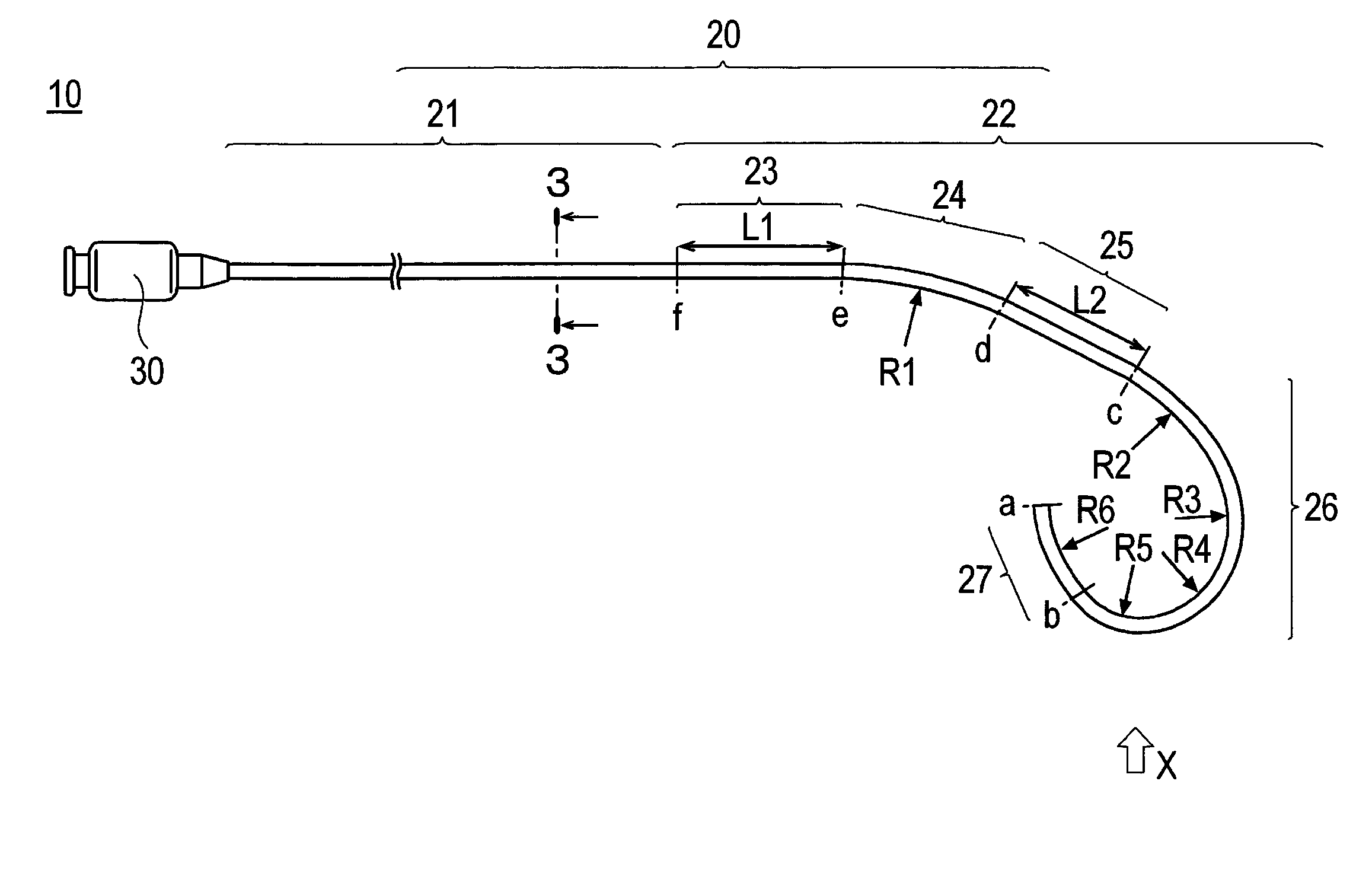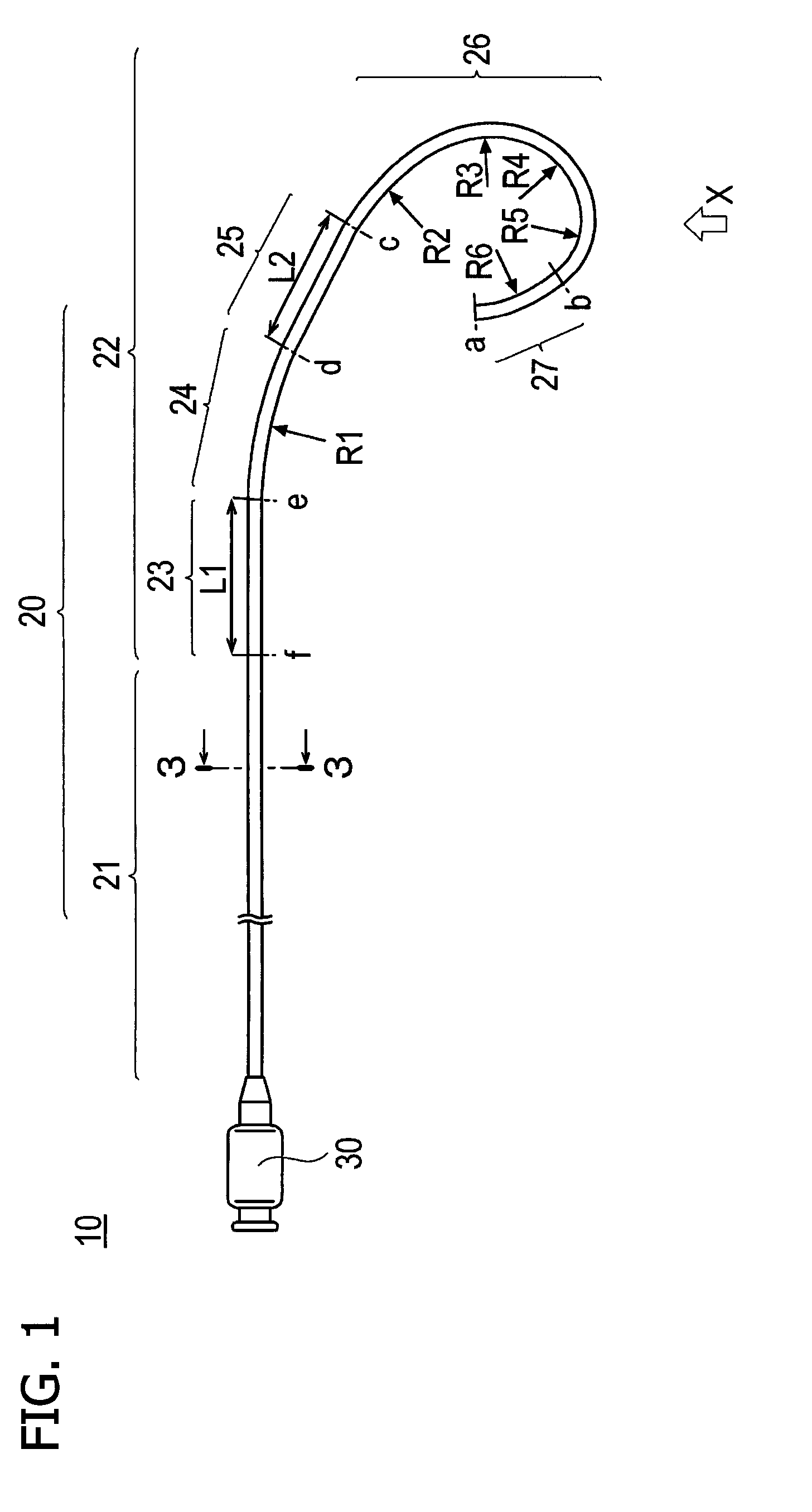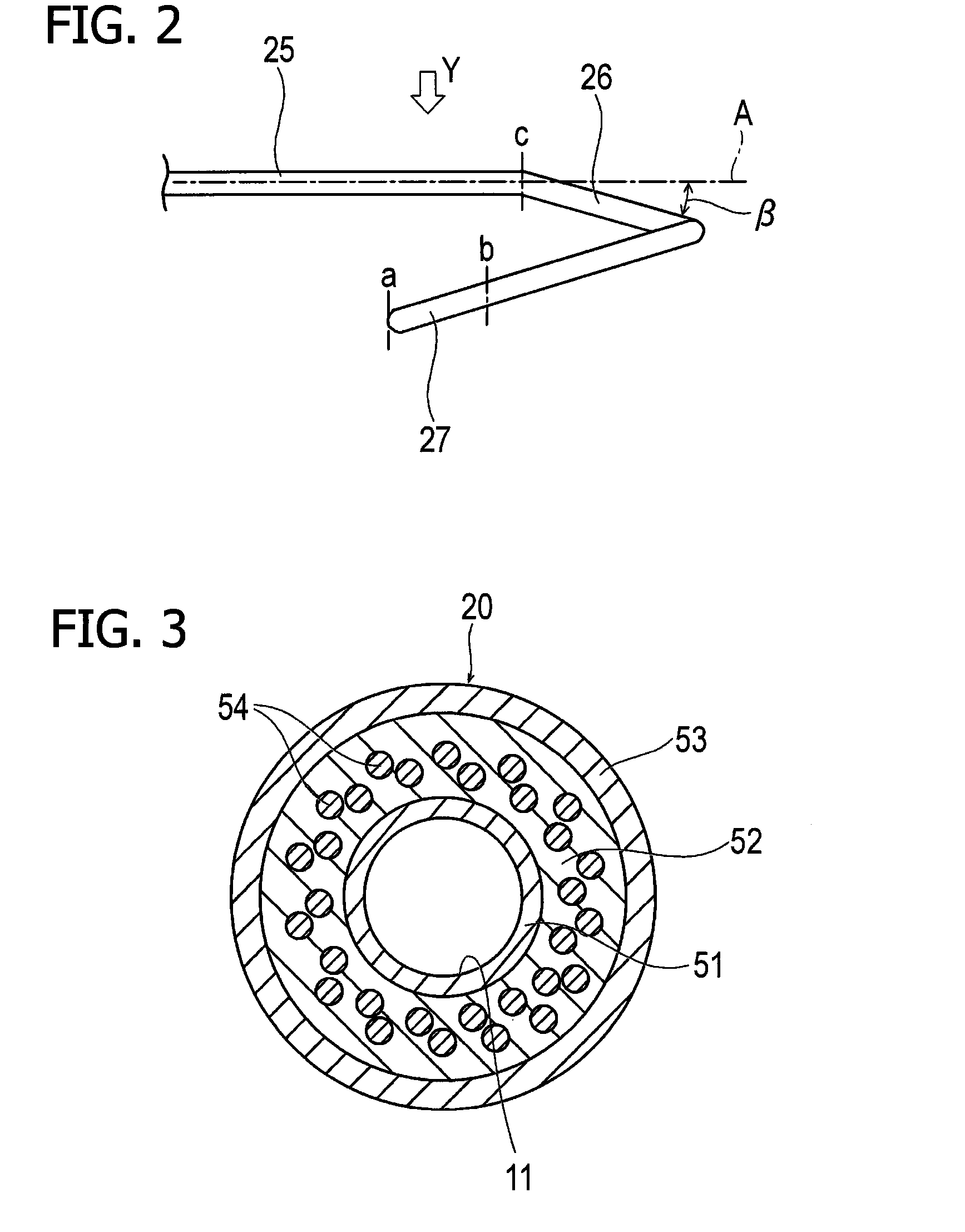Coronary artery catheter and engaging method therefor
a technology of coronary artery and catheter body, which is applied in the direction of guide needles, medical devices, other medical devices, etc., can solve the problems of imposing a heavy burden on the patient, excessive backup force to be generated, and insufficient backup force owing to bending, etc., to achieve excessive insertion of catheter body into coronary artery, and excessive backup force is restrained
- Summary
- Abstract
- Description
- Claims
- Application Information
AI Technical Summary
Benefits of technology
Problems solved by technology
Method used
Image
Examples
Embodiment Construction
[0028]Now, an embodiment of the present invention will be described below referring to the drawings. Incidentally, dimensional ratios in the drawings may be exaggerated, for convenience of description, so as to be different from actual ratios. With respect to a coronary artery catheter herein, the side of insertion into a lumen will be referred to as “distal” or “distal side,” and the side of operation by hand will be referred to as “proximal” or “proximal side.”
[0029]A coronary artery catheter 10 according to an embodiment of the present invention (hereafter referred also to simply as “catheter 10”) is adapted for introducing its distal end from an artery of a left or right arm (particularly, an artery of a right arm) into a left or right coronary ostium (particularly, a left coronary ostium 102—see FIG. 5). Incidentally, the coronary artery catheter 10 according to the present embodiment may have its distal end introduced from a femoral artery into the left or right coronary ostiu...
PUM
 Login to View More
Login to View More Abstract
Description
Claims
Application Information
 Login to View More
Login to View More - R&D
- Intellectual Property
- Life Sciences
- Materials
- Tech Scout
- Unparalleled Data Quality
- Higher Quality Content
- 60% Fewer Hallucinations
Browse by: Latest US Patents, China's latest patents, Technical Efficacy Thesaurus, Application Domain, Technology Topic, Popular Technical Reports.
© 2025 PatSnap. All rights reserved.Legal|Privacy policy|Modern Slavery Act Transparency Statement|Sitemap|About US| Contact US: help@patsnap.com



